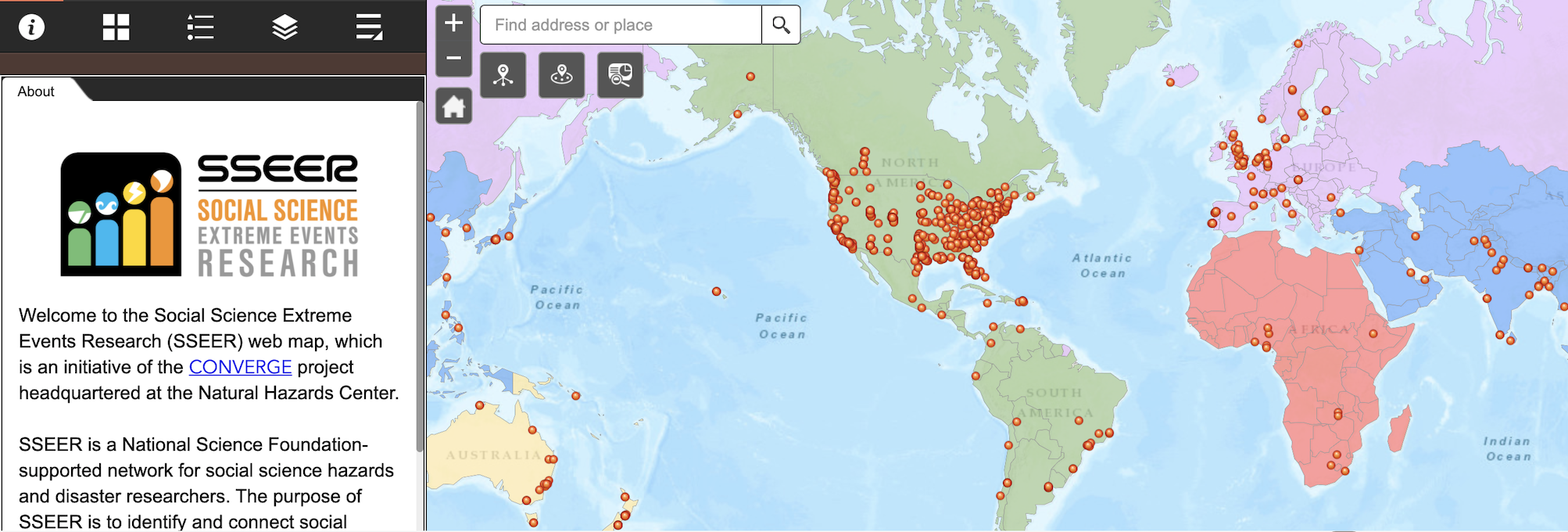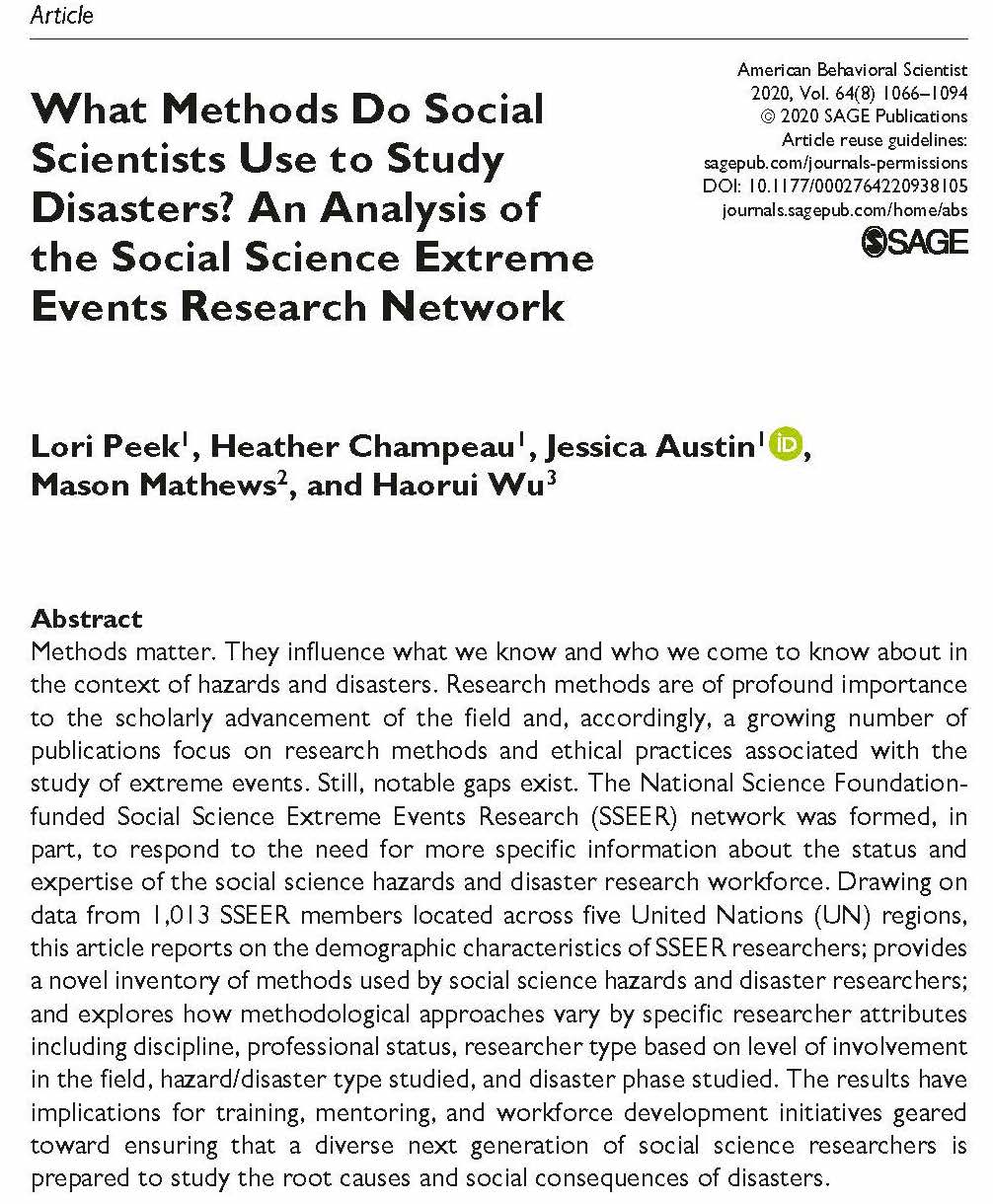 The Social Science Extreme Events Research (SSEER) web map is an initiative of the CONVERGE project headquartered at the Natural Hazards Center. ©Lori Peek, 2020.
The Social Science Extreme Events Research (SSEER) web map is an initiative of the CONVERGE project headquartered at the Natural Hazards Center. ©Lori Peek, 2020.

Methods matter. That is the premise of a recent special issue of American Behavioral Scientist, and that is the argument of an accompanying article written by Lori Peek, Heather Champeau, Jessica Austin, Mason Mathews, and Haorui Wu.
In their paper “What Methods do Social Scientists Use to Study Disasters? An Analysis of the Social Science Extreme Events Research (SSEER) Network,” the authors describe an ongoing effort to generate the first-ever census of social scientists who study hazards and disasters. Drawing on a novel dataset from the National Science Foundation-funded SSEER network, the article reports on the demographic characteristics of SSEER researchers; provides an inventory of methods used by social science hazards and disaster researchers; and explores how methodological approaches vary by specific researcher attributes including discipline, professional status, researcher type based on level of involvement in the field, hazard/disaster type studied, and disaster phase studied.
The special issue’s focus on methods emphasizes that “how we conduct research, who conducts the research, when they conduct research and why, all matter, and underpin what we know about the topic under investigation” (Frailing and Van Brown 2020:1050). Other articles in the special issue tackle the difficulties researchers face when analyzing substance abuse or crime post-disaster, the transdisciplinary nature of disaster research, and the ethical quandaries researchers face when studying disaster survivors.
While the topics spanning the special issue speak to the varied methodological challenges that hazards and disasters researchers face, they also emphasize the many lenses researchers engage with while studying the impact of disaster events on society. In the special issue’s introduction, readers are called to step into the “footprint of hope that good research” creates (Frailing and Van Brown 2020:1051).
In their paper, Peek, Champeau, Austin, Mathews, and Wu (2020) assess the current landscape of research approaches with the intention to promote a more methodologically and demographically robust future for the field. Indeed, as they argue, “It is important to continue to monitor the status of this research workforce so we can see not just who counts themselves among the ranks of social science hazards and disaster researchers, but so we can identify what matters most when investing in the future vitality of this research community” (Peek et al. 2020:1088).
You can download the paper and find other publications at the CONVERGE website.